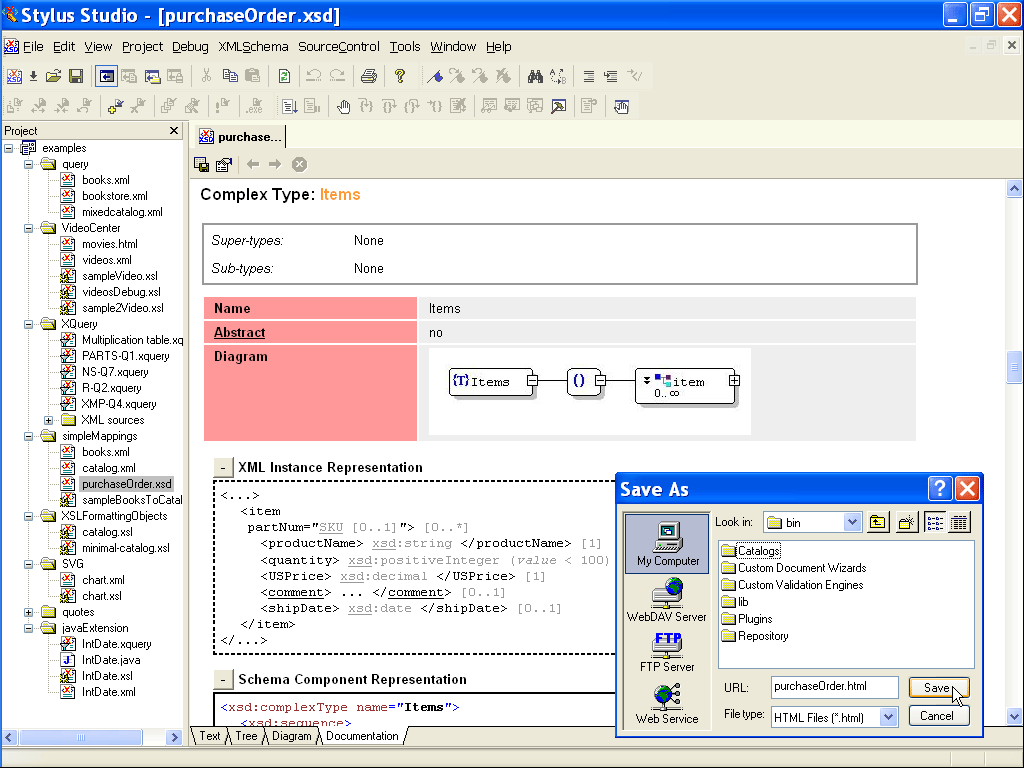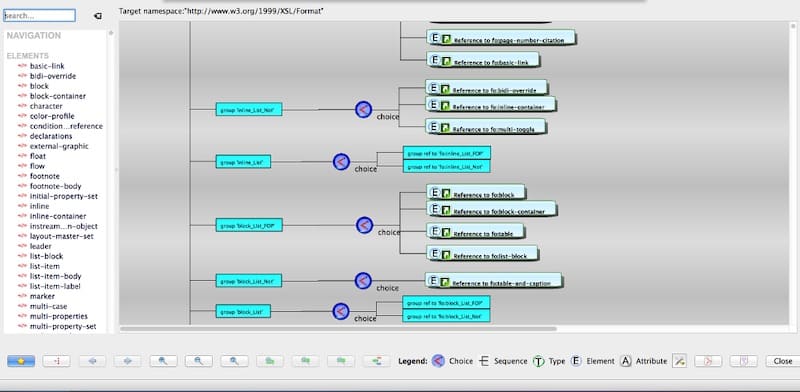WMHelp XMLPAD is a free XML viewer and editor software that can also be used as an XSD viewer software. Using this software, you can view Source Code, Diagram, and Documentation present in an XSD file with proper formatting.
Home >XML IDE - XML Editor > XML Editor Key Features > XSD Tools > XSD Editor

Stylus Studio® includes a powerful, visual XSD Editor shown below, which enables you to easily develop advanced data models expressed in W3C XSD. It is the only XSD Editor to provide a synchronized split-pane interface that simultaneously shows both a visual XSD Diagram and the underlying code, with changes in one pane immediately reflected in the other.
(click to enlarge XSD Editor)
Working with XSD is easy in Stylus Studio®, just open any existing XSD file (*.xsd) or select File > New XSD from the Stylus Studio® menu, as shown here:
Synchronized XSD Source Code and Visual Diagram View
Stylus Studio® is the only XML IDE to provide synchronized XSD Text Editing and Visual XSD Diagram Views, providing you with the maximum flexibility in editing XSDs. Any edits made to an XSD in the text editor are automatically synchronized with the XSD Diagram View, and vice versa. With round-trip engineering support in our XSD editor, there is no longer any need to switch back and forth between a schema's source code and graphical diagram — they are always kept in-synch, in real time. This powerful XSD editing metaphor is unique to Stylus Studio and is the most intuitive way to develop XSDs.
XSD Design Window
Stylus Studio®'s XSD Design Window (illustrated below), allows you to view and edit any selected XSD component, such as global elements and types. The XSD diagram can be expanded / collapsed by clicking on the (+) and (-) buttons. Each element type definition is encapsulated — for example, the Shipping element is an instance of a AddressType, hence brown border. The PurchaseOrder element has a pink border. In the XSD Design Window, you can visually insert/append/delete compositors (Choice, Sequence, All), insert XML elements and attributes, create element references, rename elements, etc. Support for drag and drop, copy/paste as well as undo/redo operations further simplify XSD Editing.
Xsd Editor Free
Adding XML Attributes to an Element
Stylus Studio® allows you to add and view XML attributes to any XSD complex type, just right-click on the element node and choose Add Child > Attribute. For example, here we are adding a product identifier (p_id) as an attribute of the Product complex type definition.

Changing XSD Compositor Models
You can easily change a compositor model, just by clicking on a compositor diagram, then from the short cut menu, select QuickEdit and the new compositor type (All, Sequence, Choice)
XSD Properties Window
A context-sensitive XSD properties window displays attributes about the selected XSD node. For example, you can specify xsd:name, xsd:type, xsd:substitutiongroup, as well as any facets, etc.
Completely Configurable XSD Diagram
Stylus Studio®'s XSD editor is completely customizable: Fonts, colors, zoom level, and you can save your preferences for future usage. Furthermore, you can customize how XSD propeties are rendered in the XSD Diagram, for example, you can specify how to display: Annotations, AppInfo, AttributeGroups, ComplexContent, Documentation, Extenstion, Group, KeyRef, etc., as illustrated here:
Save XSD data component diagrams
Xsd Editor Free Download
All of the XSD component diagrams can be saved to JPG files, just select an XSD Component, expand/collapse the diagram the way you want it to appear, then choose 'Export as Image' from the XSD menu.
Next XSD Editor Feature:Generate XSD HTML Documentation
Next: 'XSD Doc Generator'